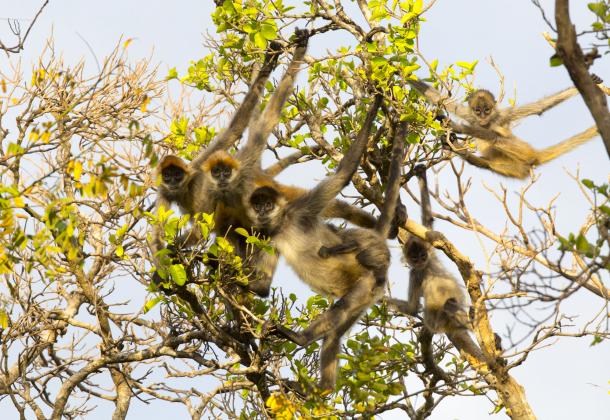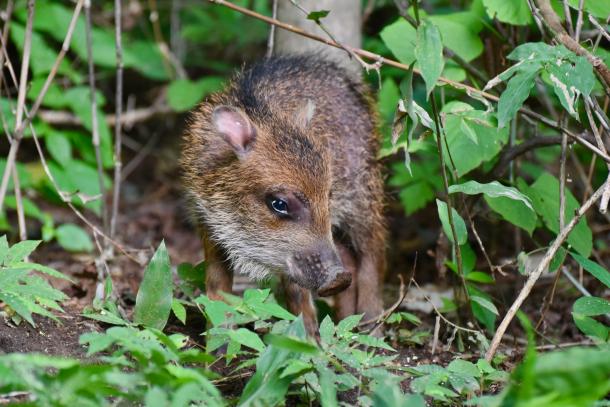
Spider Monkeys (Ateles geoffroyi). Photo by Luciano Capelli.
ACG contains an enormous number of organisms – estimated to be well over 500,000 – most of which are poorly understood, and many yet to be discovered. Working closely with ACG government staff and many academic institutions and researchers, GDFCF supports some of the most intensive tropical species inventory and identification efforts in the world. This work focuses on moths and butterflies, beetles, flies and parasitic wasps, vascular and flowering plants, and, more recently, various phyla of marine organisms.
For those seeking more information on ACG species and its research programs, we encourage you to look at the following resources:
- Overview video of species research on the ACG government website (with English subtitles).
- A video that describes the bioinventory process of capturing and identifying the over 15,000 moths and butterflies estimated to live within ACG (English subtitles in process).
- ACG Species Pages (online field guides) developed by resident parataxonomists, focusing on the natural history of ACG moths and butterflies.
- ACG home page for research on beetle diversity, with photos.
- Costa Rican Natural History, a seminal book edited by Dan Janzen in 1983, is a key resource for those looking for more in-depth information on Costa Rican species and their biology. It is available in paperback in English, and for free download in Spanish from the ACG website.
- Butterflies of America is a website that features many photographs from the caterpillar rearing project of GDFCF/ACG. Most of the ACG specimens were found, reared, databased, and photographed by the parataxonomists. Perhaps explore the links for Porphorogenes peterwegei?
- Insect Decline in the Tropics: The loss of insect abundance and diversity in the tropics is real, driven by the grand-scale removal of old-growth and secondary forests, the widespread use of pesticides and herbicides, habitat fragmentation, and climate change. Numerous articles on the subject, as it relates to ACG, can be found here, here, and here.

A juvenile white-lipped peccary (Tayassu pecari)